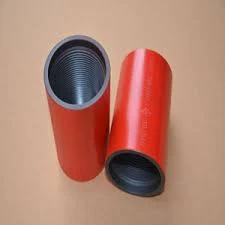- Afrikaans
- Albanian
- Amharic
- Arabic
- Armenian
- Azerbaijani
- Basque
- Belarusian
- Bengali
- Bosnian
- Bulgarian
- Catalan
- Cebuano
- Corsican
- Croatian
- Czech
- Danish
- Dutch
- English
- Esperanto
- Estonian
- Finnish
- French
- Frisian
- Galician
- Georgian
- German
- Greek
- Gujarati
- Haitian Creole
- hausa
- hawaiian
- Hebrew
- Hindi
- Miao
- Hungarian
- Icelandic
- igbo
- Indonesian
- irish
- Italian
- Japanese
- Javanese
- Kannada
- kazakh
- Khmer
- Rwandese
- Korean
- Kurdish
- Kyrgyz
- Lao
- Latin
- Latvian
- Lithuanian
- Luxembourgish
- Macedonian
- Malgashi
- Malay
- Malayalam
- Maltese
- Maori
- Marathi
- Mongolian
- Myanmar
- Nepali
- Norwegian
- Norwegian
- Occitan
- Pashto
- Persian
- Polish
- Portuguese
- Punjabi
- Romanian
- Russian
- Samoan
- Scottish Gaelic
- Serbian
- Sesotho
- Shona
- Sindhi
- Sinhala
- Slovak
- Slovenian
- Somali
- Spanish
- Sundanese
- Swahili
- Swedish
- Tagalog
- Tajik
- Tamil
- Tatar
- Telugu
- Thai
- Turkish
- Turkmen
- Ukrainian
- Urdu
- Uighur
- Uzbek
- Vietnamese
- Welsh
- Bantu
- Yiddish
- Yoruba
- Zulu
Understanding the Importance of Petroleum Tubing Couplings in Oil and Gas Operations
Understanding Petroleum Tubing Couplings An Essential Component in Oil and Gas Operations
In the complex world of oil and gas extraction, every component plays a critical role in ensuring efficient and safe operations. Among these components, petroleum tubing couplings serve as vital connectors in the piping system that transports crude oil and natural gas from underground reservoirs to processing facilities. This article explores the significance, types, and essential features of petroleum tubing couplings.
What Are Petroleum Tubing Couplings?
Petroleum tubing couplings are specialized fittings that connect sections of tubing in oil and gas wells. These couplings are critical for maintaining the integrity of the wellbore and ensuring that fluids can flow efficiently from the reservoir to the surface. Tubing itself is a hollow pipe used to transport oil, gas, or other materials, and when sections of this tubing need to be joined, couplings are employed.
Types of Petroleum Tubing Couplings
There are several types of petroleum tubing couplings available, each designed for specific applications and operational conditions
. The most common types include1. Threaded Couplings These feature male and female threads that allow for a secure connection between tubing sections. Threaded couplings are simple to install and maintain, but their performance can be affected by factors like the threading quality and installation technique.
2. Welded Couplings In high-pressure applications, welded couplings are used to create a stronger, more permanent connection. These couplings are forged by welding the tubing pieces together, eliminating concerns about threading failure but requiring specialized skills and equipment for installation.
3. Flanged Couplings These are used when easy disassembly is necessary. Flanged couplings have a flat face that allows them to bolt to another flange or fitting, making them ideal for applications where maintenance and inspection are needed frequently.
petroleum tubing coupling

4. Compression Couplings These are designed for connecting tubes of varying diameters. They provide a secure connection by compressing a ring around the tubing, making them useful in situations where space is limited.
Key Features of Petroleum Tubing Couplings
When selecting petroleum tubing couplings, several key features should be considered to ensure optimal performance and safety
1. Material Quality Couplings must be made from high-quality materials that can withstand the harsh environments typical in oil and gas operations. Common materials include alloy steels and stainless steel, which offer high strength and resistance to corrosion.
2. Pressure Rating Each coupling has a specified pressure rating, which indicates the maximum pressure it can handle without failure. It is crucial to choose couplings that match or exceed the pressure requirements of the specific application.
3. Temperature Tolerance The temperature of the fluids being transported can vary significantly, and couplings must be able to tolerate these fluctuations. Material selection plays a critical role in maintaining the integrity of couplings under extreme conditions.
4. Manufacturing Standards Couplings should be produced according to industry standards such as API (American Petroleum Institute) specifications. This ensures that they meet safety and reliability requirements essential for oil and gas operations.
Conclusion
In the oil and gas industry, every component, including petroleum tubing couplings, has a vital role in ensuring successful extraction and transportation of hydrocarbons. Understanding the types, features, and importance of couplings can help operators make informed decisions that enhance efficiency and safety. As technology evolves, improvements in coupling design and materials are likely to continue, further optimizing the extraction processes in this critical industry. Investing in high-quality couplings not only enhances operational reliability but also contributes to the overall success of oil and gas projects.
-
Tubing Pup Joints: Essential Components for Oil and Gas OperationsNewsJul.10,2025
-
Pup Joints: Essential Components for Reliable Drilling OperationsNewsJul.10,2025
-
Pipe Couplings: Connecting Your World EfficientlyNewsJul.10,2025
-
Mastering Oilfield Operations with Quality Tubing and CasingNewsJul.10,2025
-
High-Quality Casing Couplings for Every NeedNewsJul.10,2025
-
Boost Your Drilling Efficiency with Premium Crossover Tools & Seating NipplesNewsJul.10,2025







